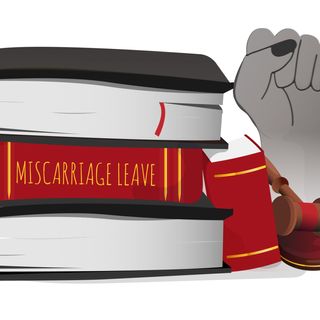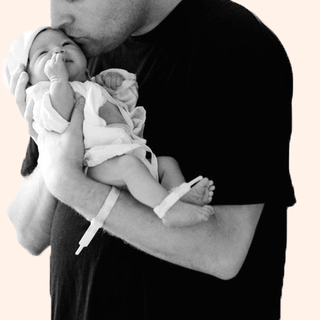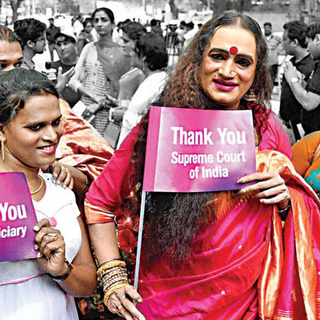
UN Report Spotlights Role of Family in Progress Toward Gender Equality
The report highlights the trade-offs and contradictions that characterize women’s struggle for agency.

“Families can be make-or-break for women and girls.” Truer words — which kick off “Progress of the World’s Women: Families In a Changing World,” a new report by UN Women on global progress toward gender equality — were never written. The struggle for women’s emancipation and equality starts at home, even in homes that are loving and secure; nurturing doesn’t necessarily include agency, a dichotomy that is well-known to Indian women.
Globally, the report notes marked progress in family laws and lifestyles, toward better conditions and freedom for women. For instance, it states, “the liberalization of divorce laws in some developed countries has led to lower rates of suicide by women, a lower incidence of reported domestic violence and fewer instances of women being murdered by their spouses.”
At the same time, the report notes, more-liberal laws don’t necessarily translate to broader empowerment and equality when other aspects of systemic gender inequity aren’t addressed: “Ending a relationship typically entails far more adverse economic consequences for women than for men. All too often, women lose access to marital assets, resources, or even child custody.”
Related on The Swaddle:
It’s this double-edged sword of social change that the report spotlights best: the fact that progress toward gender equality in one area often results in new or additional inequity for women in another, that security in one aspect of life often creates vulnerability in another. India is a case study for this trade-off-filled, two-steps-forward-one-step-back, lumbering kind of progress. The report cites the country’s perniciously persistent practice of dowry: “Women in Kerala, in Southern India, expressed contradictory views on dowry: while they noted the centrality of a substantial dowry to securing a good marriage” — a good marriage, one would assume, being one that facilitates both financial security and personal agency — “they also identified dowry as ‘the main problem women face.'” The report followed this with data from the National Crime Records Bureau showing “female dowry deaths account for 40 to 50% of all female homicides recorded annually, with little change between 1999 and 2016.”
Related on The Swaddle:
What It Takes For the Urban Indian Woman to Dissent
Similarly, positives like rising family incomes and increased enrolment of girls in school come with a backlash for women, in the form of low formal workforce participation and few assets; only 17 to 26% of women (depending on the source), aged 15 to 49, have an income or wage of their own — a decrease of nearly 7% points over the past 20 years — and even fewer own property. As the report (and others) notes: “One explanation for this drop is that family incomes have stabilized as men have shifted from casualized forms of work to regular wage earning, thereby encouraging women’s withdrawal from paid work. Given the poor quality of the paid work that is available to women, often on top of long hours of arduous unpaid domestic chores, it is not implausible that some improvements in household income levels could have eased the pressure on women to seek outside employment. Moreover, rural married women aged 25–40 are more likely to have school-age children; with girls’ rising rates of secondary school attendance, women are less likely to have their daughters’ help with unpaid domestic responsibilities and thus are more likely to forgo paid employment themselves.”
In other words, because of persistent expectations that women be responsible for domestic duties like cooking, cleaning, child and elder care, “entrance into the labor force can mean longer workdays for women, undermining their health and leaving them worse off despite the increase in market income” (especially for disadvantaged women). With increased wealth, women’s income, therefore, is seen as optional in order to preserve women’s energy and health for the home — their first expected priority and duty. In a perfect world, this would be a reasonable choice reached by two equal partners. But we live in a patriarchal world, and this withdrawal from the workforce, while perhaps leading to overall better health, makes women more dependent on their husbands, more vulnerable to lost marital assets and resources, and more likely to live in poverty in the event of a divorce — which at worst leaves women in abusive relationships with little alternative than to stay in them, and at best can position women even in healthy relationships on the backfoot in the family’s financial decision-making.
Related on The Swaddle:
Urban Women Spend 312 Minutes a Day in Unpaid Carework; Men Spend 29
If there’s any hope offered from the report, it’s in its depiction of what constitutes a family — the redefinition of which offers, potentially, more freedom and agency to women than anything else, as it means the challenging of constricting norms. Nuclear families in Central and South Asia, the region that includes India, now constitute roughly half of all households, with joint families making up one-third. The remaining one-sixth — 15% — comprise couple-only, single person, single parent, and chosen-family/roommate/non-relative households. While still the minority, this group is no longer as rare as it once was. The report cites the repeal of Section 377, which in 2018, decriminalized homosexuality, as evidence of the potential to expand our definition of family further.
Similarly, its documentation of how the traditional system of arranged marriage is slowly breaking down into a semi-arranged state, in which women are getting more say in when and whom they marry, bodes well. Though it is still far from being a universal experience, “women in semi- and self-arranged marriages are three times as likely as those in family-arranged marriages to exercise agency on key areas of decision-making — including on expenditures, when to have children (and how many) and contraception — and twice as likely to be able to visit friends and relatives unescorted. Those in semi-arranged marriages are also less likely to experience marital violence compared to those in traditional parent-arranged marriages.”
The change toward women’s emancipation and equality starts at home.
Liesl Goecker is The Swaddle's managing editor.
Related


Zomato First Company in India to Roll Out Gender‑Equal, 26‑Week Parental Leave
